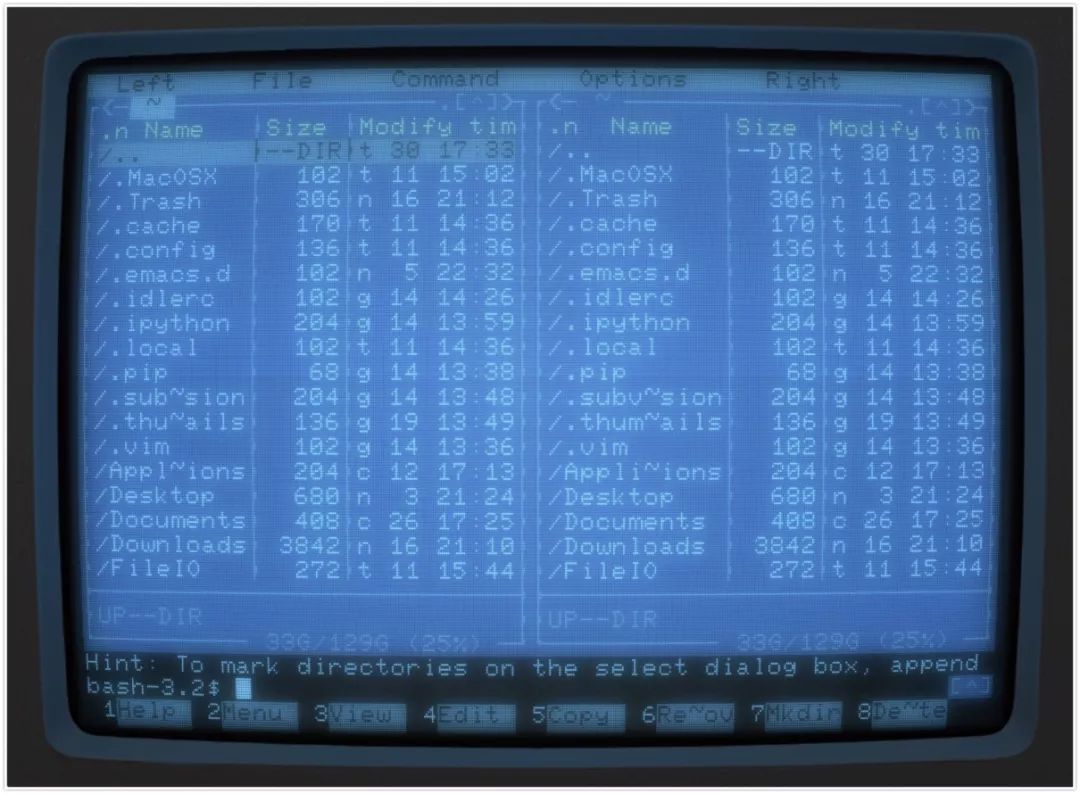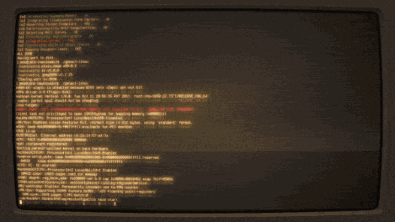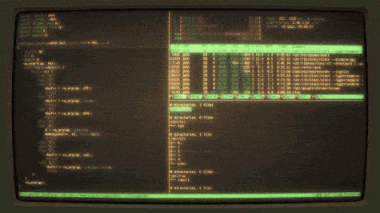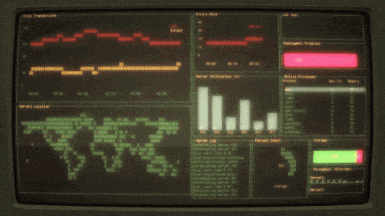(Click the public account above to quickly follow)
Author: Jason Baker, Translated by: Linux China/wyxplus
linux.cn/article-9591-1.html
Sometimes you are busy. And sometimes you just need to look busy, like the hackers in movies. There are some open-source tools that do just that.

If you have ever watched spy movies, action films, or crime dramas while passing the time, you can clearly picture the hacker’s computer screen in your mind. Just like the “code rain” of hexadecimal numbers in the movie “The Matrix,” or rows of rapidly moving code.
Perhaps there is a world map in the movie, dotted with flashing lights and some rapidly updating charts. Indispensable, there might also be 3D rotating geometric shapes. Even all of this would be displayed on some absurdly large screens that are completely impractical for human use. In the movie “Swordfish,” the hacker used seven displays.
Of course, we in the computer industry immediately understand that this is complete nonsense. While many of us have dual monitors (or more), a flashing data dashboard and refreshing data usually contradicts focused work. Writing code, project management, and system administration are different from daily tasks. In most cases we encounter, solving problems requires a lot of thinking, gathering research and organized materials from client communications, and then a little bit of coding.
However, this does not contradict our desire to achieve the effects seen in movies; perhaps we just want to look “busy at work.”
Note: Of course, I am just rambling here. If your company actually evaluates your work based on how busy you are, whether you are blue-collar or white-collar, this work culture needs urgent attention. Pretending to be busy is a toxic culture that is harmful to both the company and the employees.
That said, let’s have some fun and fill our screens with some old-fashioned, meaningless data and code snippets. (Of course, the data might be meaningful, but not in this context.) There are certainly some fun graphical programs for this purpose, such as hackertyper.net or GEEKtyper.com (LCTT note: these are websites for pretending to hack online), but why not use standard Linux terminal programs? For a more old-school look, consider using Cool Retro Term, which indeed sounds like a cool retro terminal program. I will use Cool Retro Term in the screenshots below because it looks really cool.
Genact
Let’s take a look at the first tool—Genact. The principle of Genact is simple: it endlessly loops a sequence of your choice slowly, making your code appear to be “compiling” while you are away. You decide the playback order, but it defaults to include a cryptocurrency mining simulator, Composer PHP dependency manager, kernel compiler, downloader, memory dump, and more. My favorite is the one that resembles the loading display from “SimCity.” So as long as no one checks closely, you can spend an entire afternoon waiting for your computer to finish the progress bar.
Genact has released versions for Linux, OS X, and Windows. Its Rust source code is open-source on GitHub (under the MIT License).

Hollywood
Hollywood takes a more direct approach. It essentially creates a random number and configuration of split screens in the terminal and launches applications that look busy, such as htop, directory trees, source code files, etc., switching them every few seconds. It is organized as a shell script, so it can be easily modified to suit your needs.
The source code for Hollywood is open-source on GitHub (under the Apache 2.0 License).

Blessed-contrib
Blessed-contrib is my personal favorite application, which is not actually designed for this performance. Instead, it is a demonstration file for a terminal dashboard building library based on Node.js. Unlike the other two, I have actually used the Blessed-contrib library in my work, not just to pretend to be busy. It is a quite useful library and can use a set of widgets to display information in the command line. Meanwhile, filling it with virtual data is also easy, so you can easily simulate the idea of “WarGames” on your computer.
The source code for Blessed-contrib is available on GitHub (under the MIT License).

Of course, while these tools are easy to use, there are many other ways to enrich your screen. One of the most commonly used tools you see in movies is Nmap, an open-source network security scanning tool. In fact, it is widely used to showcase tools on hacker computer screens in Hollywood films. Therefore, the developers of Nmap created a page listing some of the movies it appears in, from “The Matrix Reloaded” to “The Bourne Supremacy,” “The Girl with the Dragon Tattoo,” and even “Live Free or Die Hard.”
Of course, you can create your own combinations using terminal multiplexers (like screen or tmux) to launch any data-splitting programs you wish to use.
So, how do you use your screen?
Did you gain anything from this article? Please share it with more people.
Follow “Python Developers” to enhance your Python skills
